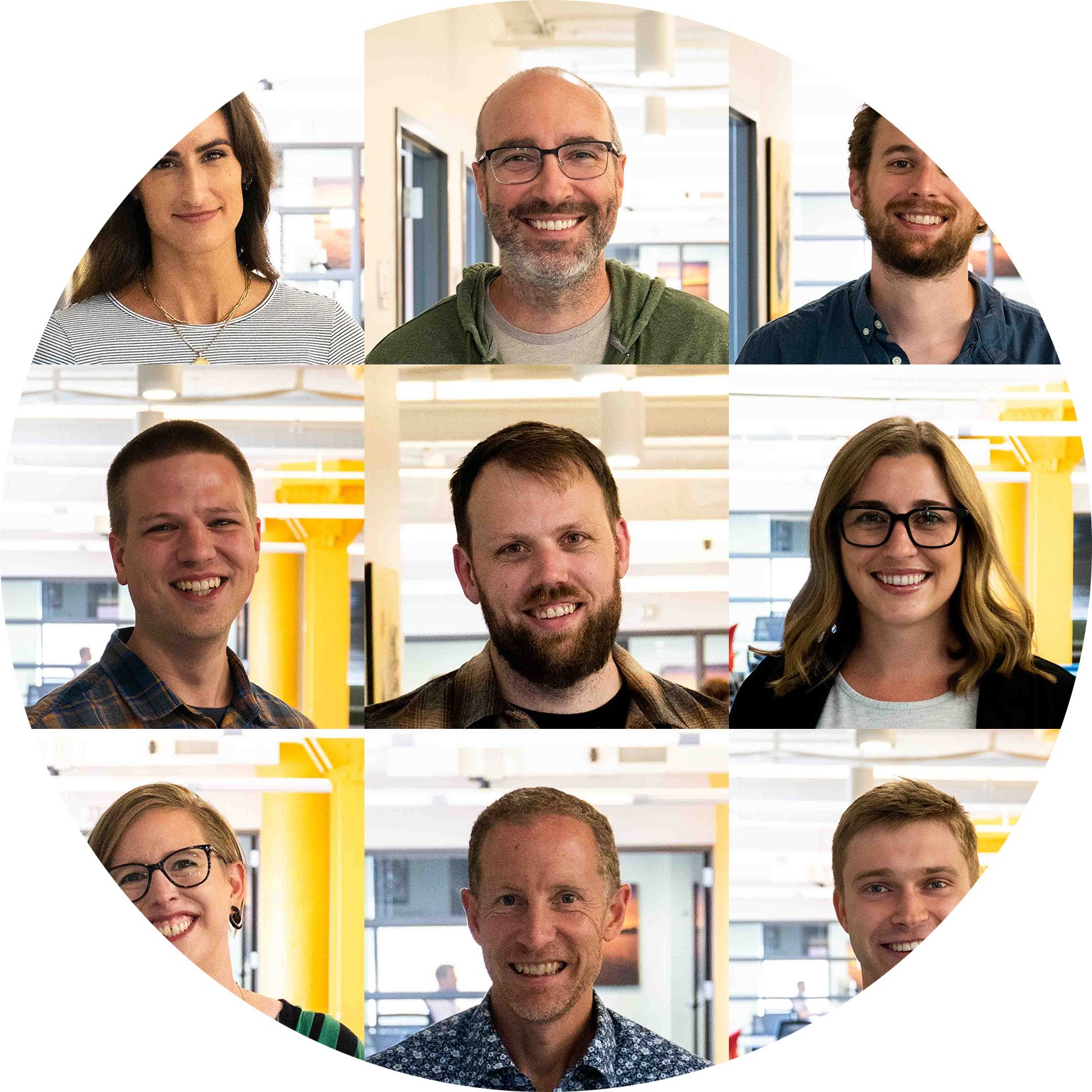“Returning from work feeling inspired, safe, fulfilled, and grateful is a natural human right to which we are all entitled and not a modern luxury that only a few lucky ones are able to find.”
— Simon Sinek
We spend a lot of time thinking about how to create a workplace people want to be part of and not just stay at. Over the past few years, conversations around retention have gotten louder across the industry. But in our experience, the real lever isn’t retention strategy. It’s fulfillment.
When people feel fulfilled in their work, when they’re growing, supported, and doing something they believe in, they tend to stay. More importantly, from our experience, they tend to thrive. We don’t have a formal “retention program.” What we have is a culture that tries to make room for joy, autonomy, and real connection.
This piece reflects our approach, not as a prescription but as a perspective. If you’re leading a team, shaping culture, or just trying to figure out how to keep good people engaged, we hope this gives you something useful to consider.
What We’ve Learned About Fulfillment
We’ve learned fulfillment doesn’t come from big, abstract ideas. Instead, it is shaped by the small, consistent things that show people they’re trusted, supported, and valued. Over time, these are the patterns we’ve seen matter most for our team.
- Transparency in how decisions are made
- Predictable schedules and sustainable pace
- A culture of trust and empathy
- Space for autonomy, not micromanagement
- Meaningful onboarding and support for new team members
- Room to ask questions and make mistakes
- Regular, thoughtful feedback
- Flexibility in where and how people work
- Opportunities to connect outside of work (when people want it)
These aren’t perks. They’re the foundations of a healthy, fulfilling work experience. And for us, they’ve made all the difference in helping people grow, stay, and thrive.

Growth Doesn’t Always Look Like a Promotion
We’re a small company. There are no corporate ladders here. Instead, we’ve built a culture where growth means diving into new challenges, not just climbing higher. That means we’ve had to think differently about how we support growth.
For us, it’s about project variety, deeper ownership, and expanding into new technical areas or responsibilities. It’s about encouraging people to move horizontally, not just upward. They get to explore different parts of the stack, tackle new problems, or step up as leaders in new ways.
We also know that growth doesn’t always mean a title change. Our team is intentionally small and flat, so upward mobility looks different. But that doesn’t mean people don’t grow, they just grow in different ways.
Rather than focusing on promotions, we emphasize lateral development. This might mean taking on a new type of project, diving into a new tech stack layer, or stepping into more ownership in areas like architecture or client interaction.
Nobody here is “pot swappable.” We don’t rotate people just to fill roles. But we do encourage movement across domains so our team members can stretch, gain new skills, and build toward mastery in ways that matter to them.
The Role of Leadership
You’ve probably heard the phrase, “people leave managers, not companies.” It’s an oversimplification, but there’s a kernel of truth in it. When someone feels unheard, unsupported, or disrespected, it often traces back to how leadership showed up, or didn’t.
At Punch Through, we don’t see leadership as a title. We see it as a practice. It’s not something done to people, but withpeople. Leadership is about creating clarity, staying consistent, listening actively, and owning up to mistakes when they happen.
Our managing partner, Mike, summed it up perfectly in a recent conversation:
“If I say I’ll do something, I’ll do it. But I’m human and I forget things. If that happens, don’t assume it was intentional. Just tell me and I’ll fix it.”
— Mike Waddick
It’s a simple statement, but it speaks volumes. Humility and transparency like this aren’t exceptions here, they’re the standard. Leadership here means showing up honestly and inviting others to do the same.
Retention Is an Outcome, Not the Goal
We don’t try to retain people with policies or perks. Instead, we focus on creating the kind of environment people choose to stay in. A place where the work matters, the culture supports you, and the day-to-day experience feels sustainable and meaningful.
That includes:
- Taking on meaningful work
- Keeping stress and ambiguity in check
- Offering autonomy and flexibility
- Having each other’s backs
- Hiring people who share our mindset
We’ve also put a lot of thought into how we recruit. We use consistent evaluation methods, try to minimize bias, and look for people who are curious, collaborative, and values-aligned. More than just depth of domain expertise, we prioritize mindset — people who are eager to learn, open to feedback, and aligned with how we work. That effort matters. The people we bring in shape the culture we keep.
We Don’t Wait for Problems to Get Loud
We don’t make assumptions about how people are doing, we stay connected to their experience. Tools like Officevibe, regular development surveys, and bi-weekly check-ins allow us to go beyond surface-level questions. We’re intentional about asking, “What’s working? What’s not? Where do you need support?”
But we don’t stop there. We’ve built systems for mentorship, management, and peer support so that challenges, whether personal or professional, have multiple ways to surface and be addressed.
It’s not always pretty. But creating space for honest feedback and acting early helps us avoid surprises down the road.
When someone decides to leave, we don’t shy away from asking what we missed. This is not out of guilt but because we always look for ways to improve. Sometimes, the answer is “nothing,” and that’s okay, too.

Compensation Without Strings
We’ve given careful thought to how we structure compensation, not just to be competitive but also to align with the kind of culture we’re trying to build.
We don’t believe retention and compensation should be tightly coupled. People shouldn’t feel stuck just because a bonus is around the corner and shouldn’t walk away because they quietly fell behind the market. That’s not a healthy dynamic for anyone.
So, we’ve designed our compensation approach to be:
- Transparent: no hidden bonuses or delayed incentives
- Equitable: grounded in data, not negotiation games
- Immediate: 401k is fully vested on day one, and bonuses are built into every paycheck
- Outcome-based: pay is tied to the value someone brings, not how long they’ve been here
The goal is to ensure that people feel valued and free to stay because they want to, free to leave when the time is right, and confident that they’re being treated fairly either way.
What Turnover Has Taught Us
We’ve spent time reflecting on why people leave and what those moments reveal about our culture, expectations, and leadership. Over time, we’ve seen three patterns emerge. They aren’t hard rules, but they’ve helped us make sense of the stories behind the exits.
When It’s Good
Sometimes, someone outgrows what we can offer and is ready for something new. That might be a bigger team, a fresh challenge, or a shift to a different industry. In those cases, we’re genuinely happy for them.
Karel, one of our former engineers, moved to San Diego and joined a company focused on diabetes care. A while later, she messaged us to share that she’d been promoted to Engineering Manager and credited her growth here as a key part of that journey. Departures like this aren’t losses. They’re reflections of the kind of environment we set out to build.
When It’s Preventable
Then there are the departures that catch us off guard. Some leave because they didn’t feel supported, burned out, or misaligned with the role.
In those moments, we try to look closely at what we may have missed. Did we ignore a signal? Were expectations unclear? Did we overlook an opportunity for growth or support? These exits are harder—because they’re often avoidable. And if we don’t ask the hard questions, we risk repeating the same pattern.
When It Just Isn’t a Fit
Sometimes, even with the best intentions on both sides, it’s simply not the right match. Maybe someone needs more structure than we offer. Maybe our communication style doesn’t click. Or maybe the work isn’t what they expected.
These situations are never easy, but they’re not failures either. We aim to make the transition respectful, clear, and supportive. And we take what we’ve learned into future hiring and onboarding decisions.
Culture Is Never “Done”
We don’t think we’ve figured it all out. Culture is a living thing, and we’re always refining how we show up for our team. What we do know is that joy and fulfillment aren’t extras. They’re essential to how we build software, support one another, and deliver for our clients.
We’re proud of what we’ve built so far and clear-eyed about the work ahead. If you’re navigating similar challenges, trying to build a team people want to be part of, we hope this perspective offers something useful.
We’re always open to sharing what’s worked, what hasn’t, and what we’re still figuring out. It’s not a playbook. It’s a conversation. Let’s keep it going.



